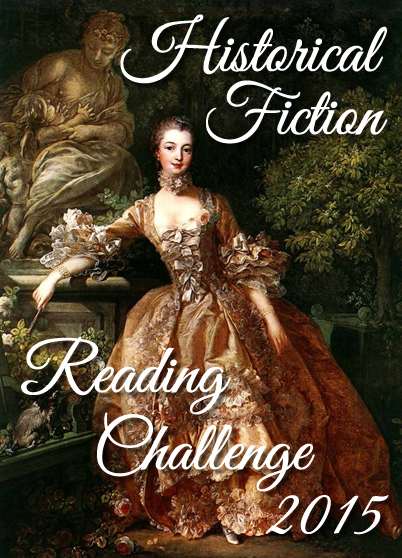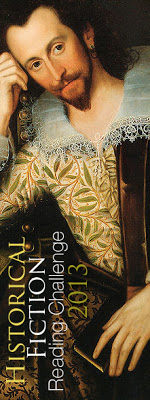One of the reasons I keep signing up for reading challenges, even though my completion rate the last few years has not been stellar, is that challenges make me think about reading books I might otherwise not read, and they help me classify my reading. You might be wondering why reading needs to be classified. Well, perhaps it doesn’t, but I like to do it for some reason. It’s like tagging on Goodreads or Shelfari. It gives me something to hang the book onto, and for some reason I like it.
Each year, I think this year is going to be my year. In truth, I do need to make more time for reading, and around December, when I start reflecting on my reading year, I think also about what I want to read the next year. The older I get, the less patience I have for books that don’t grab me, and I haven’t had a really excellent reading year for quite a long time. Sometimes, reading challenges help me focus and select books. I don’t always select books I wind up enjoying, but when I’m on a good book streak, there’s nothing like it.
I am signing up for the following reading challenges in the hopes that they’ll contribute to a great reading year in 2015.
 The Reading England Challenge looks like a great deal of fun. Typically, English and/or British reading challenges have a broader focus on the country as a whole (or even the entire UK). This challenge shakes things up a bit by asking readers to “travel England by reading, and read at least one book per however many counties of England you decide to read.” I already keep track of the settings for each book I read, and this seems like an interesting way to explore the country a little more purposefully and thoughtfully. I’d love to try to do 12+ counties, and in the spirit of going big or going home, I’m going to shoot for that level. I already read so many books set in England—the challenge here will be to try to select books from a variety of places in England.
The Reading England Challenge looks like a great deal of fun. Typically, English and/or British reading challenges have a broader focus on the country as a whole (or even the entire UK). This challenge shakes things up a bit by asking readers to “travel England by reading, and read at least one book per however many counties of England you decide to read.” I already keep track of the settings for each book I read, and this seems like an interesting way to explore the country a little more purposefully and thoughtfully. I’d love to try to do 12+ counties, and in the spirit of going big or going home, I’m going to shoot for that level. I already read so many books set in England—the challenge here will be to try to select books from a variety of places in England.
 The Literary Movement Reading Challenge speaks to my English teacher side. I don’t always stretch myself to read outside of favorite genres and literary movements, and this challenge could be just the thing to encourage me to try some books I’ve been meaning to read. Weirdly, I am excited about the constraints in this challenge, and I’m looking forward to selecting potential books.
The Literary Movement Reading Challenge speaks to my English teacher side. I don’t always stretch myself to read outside of favorite genres and literary movements, and this challenge could be just the thing to encourage me to try some books I’ve been meaning to read. Weirdly, I am excited about the constraints in this challenge, and I’m looking forward to selecting potential books.
 This year, I expect I will probably meet my goal of reading 30 books. Even in my best year, I didn’t make it to 52 books, and I’d really like to do that, just once. It could be this is the year. To that end, I’m signing up for the 2015 Outdo Yourself Reading Challenge with the goal of reading at the I’m on Fire! Level of 16+ books more than I read in 2014.
This year, I expect I will probably meet my goal of reading 30 books. Even in my best year, I didn’t make it to 52 books, and I’d really like to do that, just once. It could be this is the year. To that end, I’m signing up for the 2015 Outdo Yourself Reading Challenge with the goal of reading at the I’m on Fire! Level of 16+ books more than I read in 2014.
 The English teacher in me is also excited by the Back to the Classics Challenge. I’m going to shoot for completing nine categories in this particular challenge. If I’m able to complete all twelve categories, that’s great, but for this particular challenge, I decided to aim for the middle.
The English teacher in me is also excited by the Back to the Classics Challenge. I’m going to shoot for completing nine categories in this particular challenge. If I’m able to complete all twelve categories, that’s great, but for this particular challenge, I decided to aim for the middle.
As I have the last few years, I’ll also join the Historical Fiction Reading Challenge once the challenge details are posted, as well as the R.I.P. Challenge once it happens.
 Finally, I want to do the Where Are You Reading Challenge as I have done the last couple of years. I really enjoy keeping track of the settings for the books I read.
Finally, I want to do the Where Are You Reading Challenge as I have done the last couple of years. I really enjoy keeping track of the settings for the books I read.
I don’t want to bite off too much more than I can chew, and I left several challenges this year completely untouched because they went perhaps a bit too much out of my usual reading habits, but I do hope to make a dent in these challenges as well as read a lot of young adult fiction next year, mainly so I can talk books with students and not feel out of the loop.
Updated 1/7/15 to add: The Historical Fiction Challenge is open! I’ll be attempting to read 10 books for the Renaissance Reader level.























